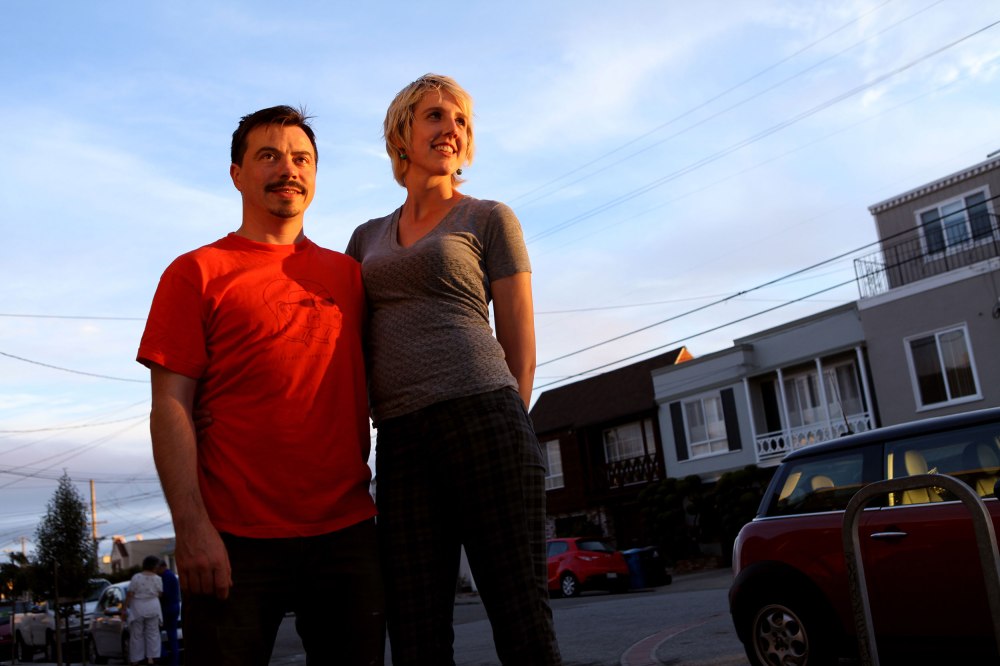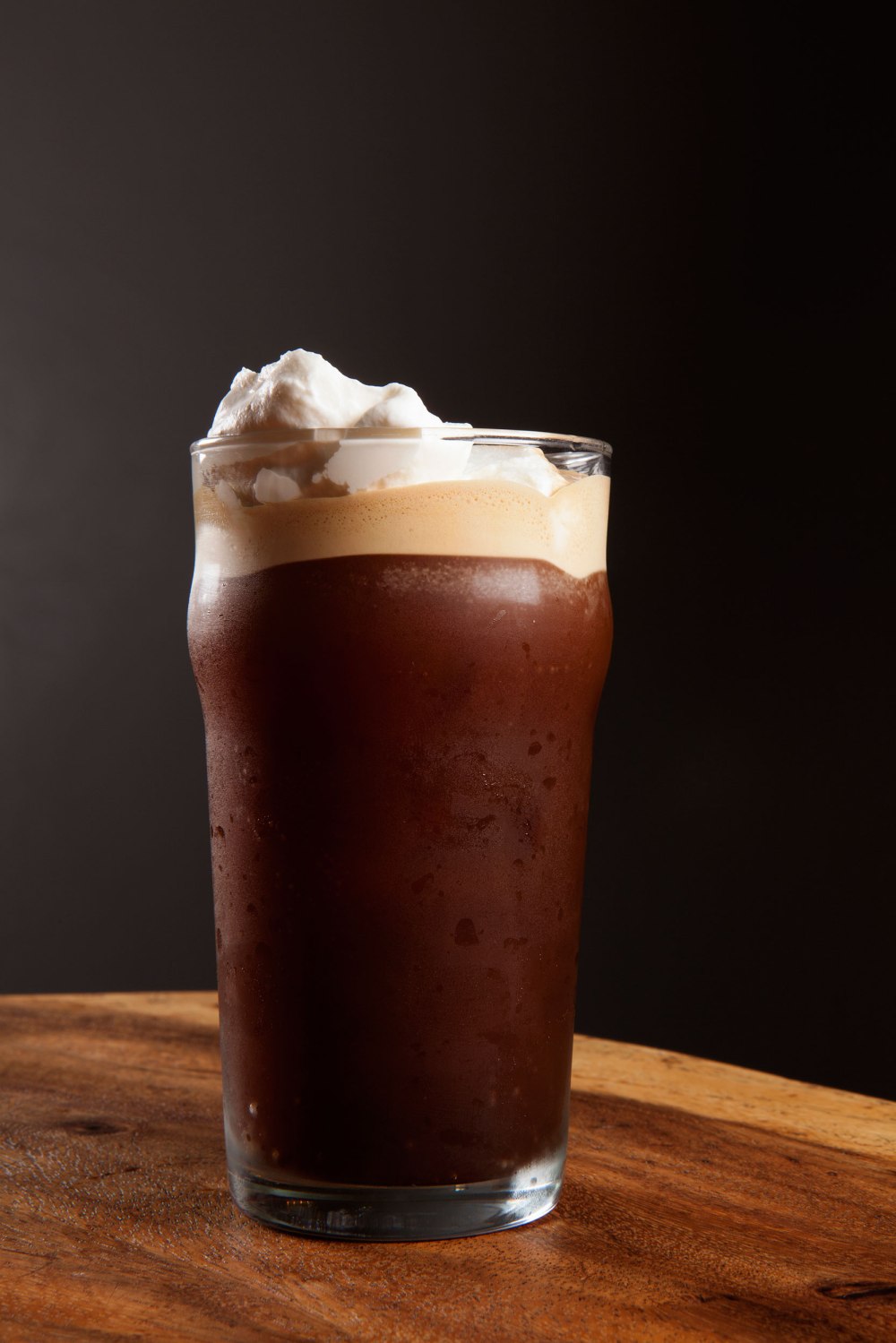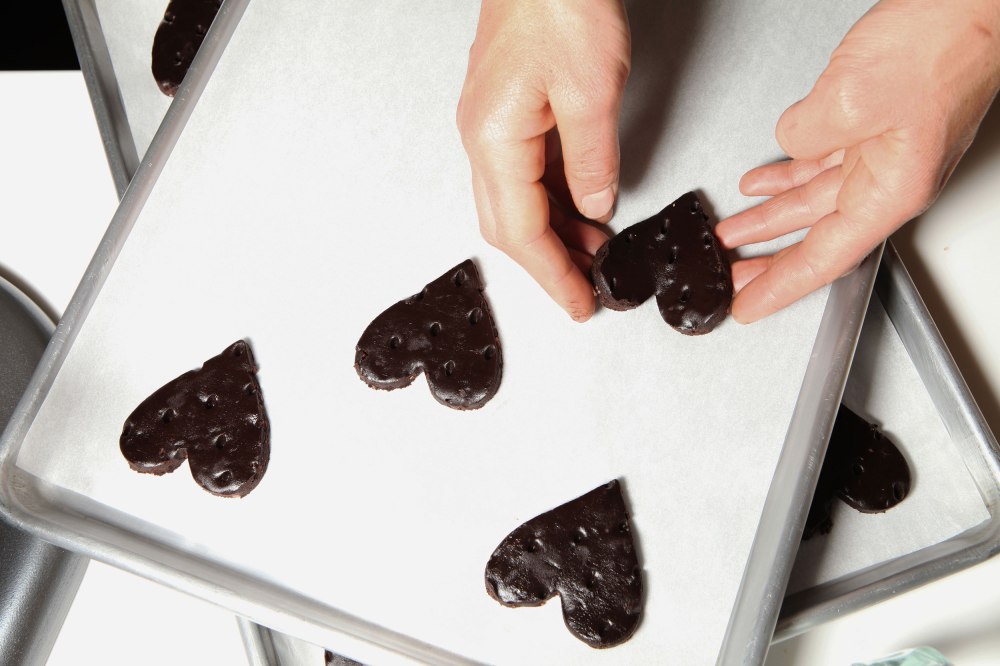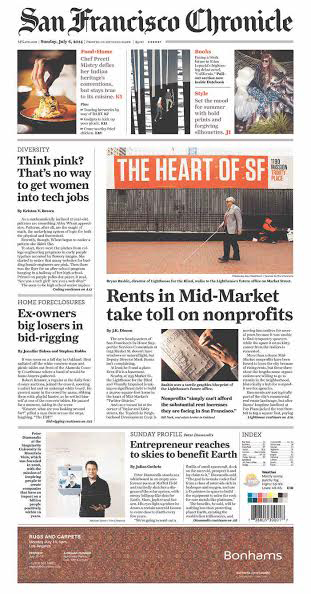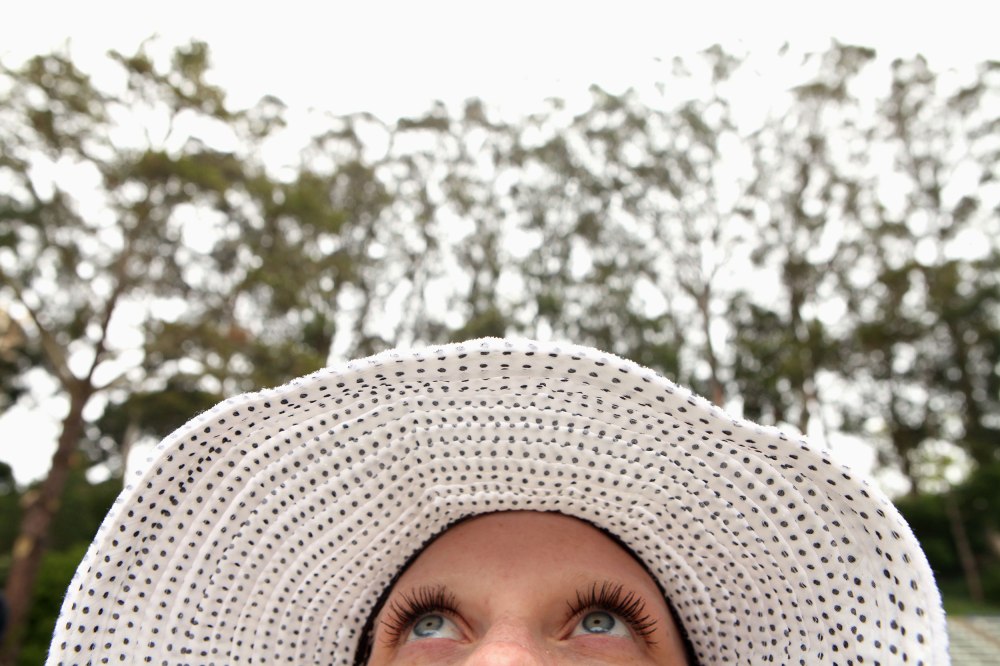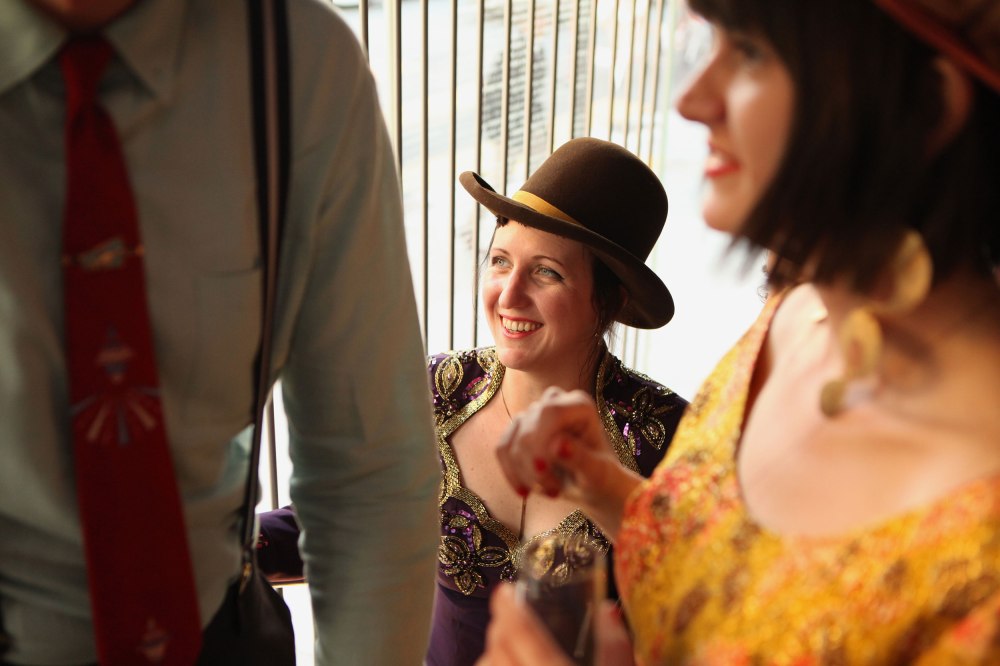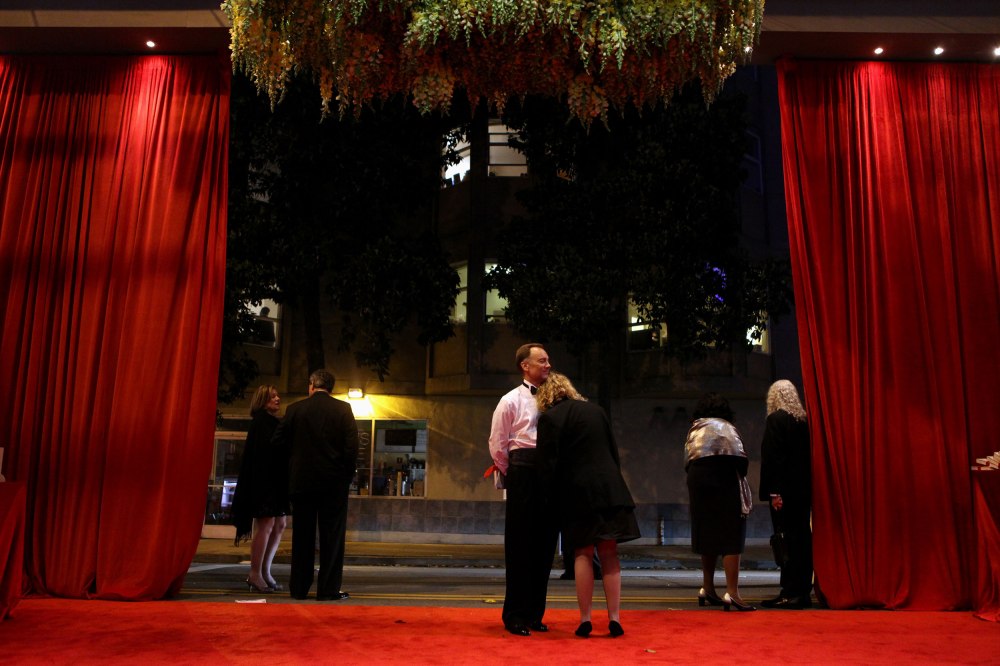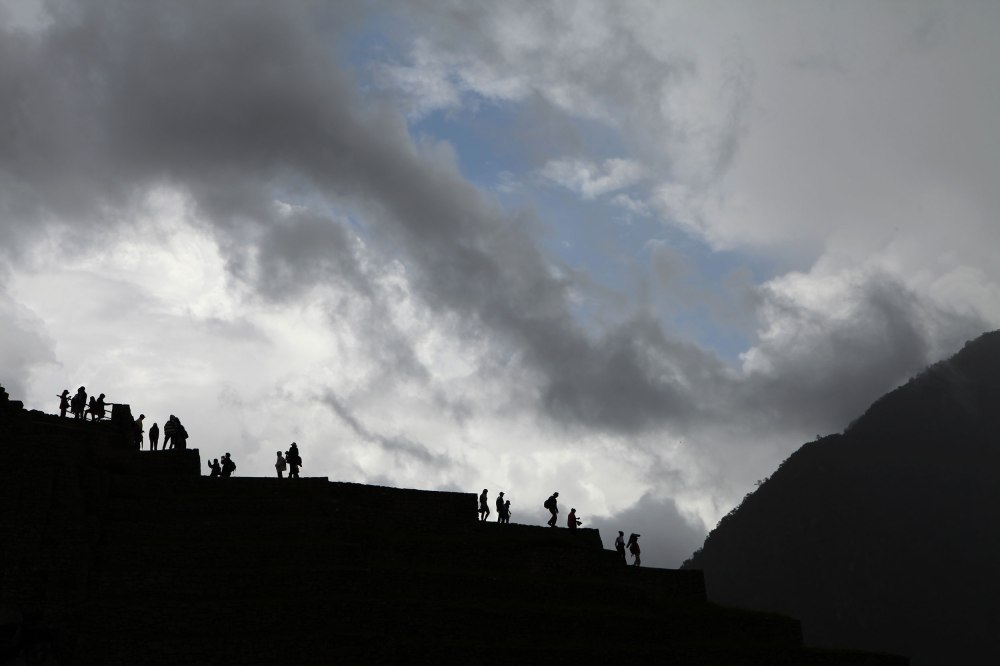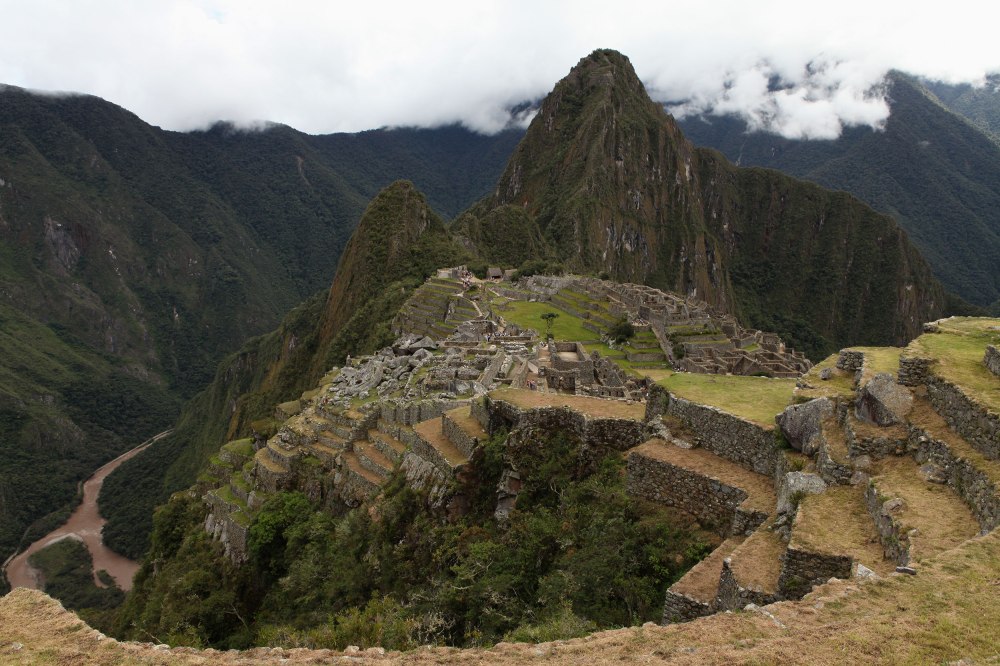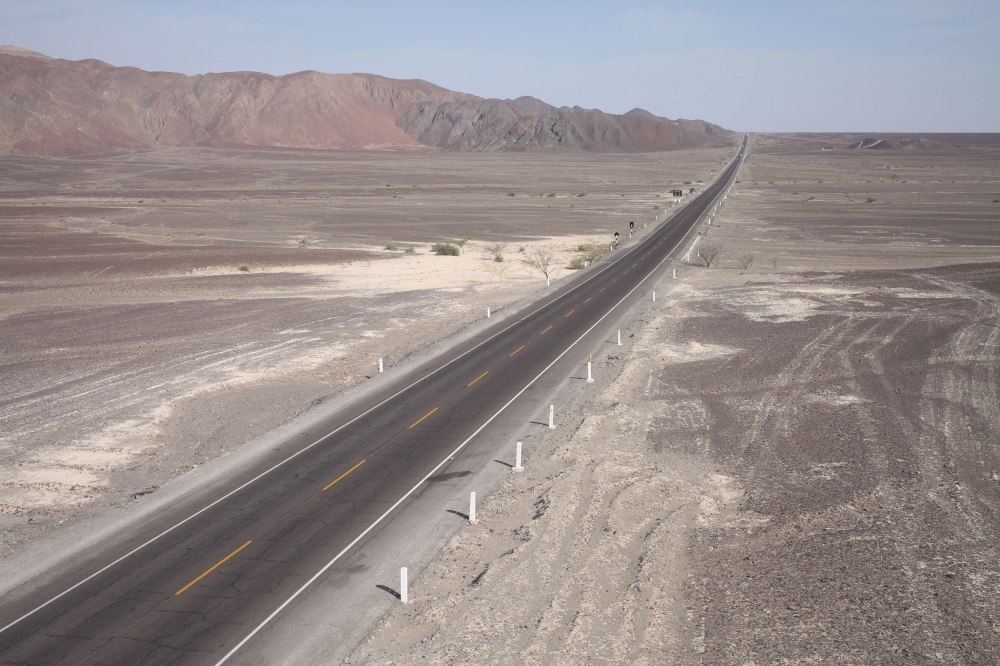Lighthouse for the Blind and Visually Impaired
Posted on July 10, 2014
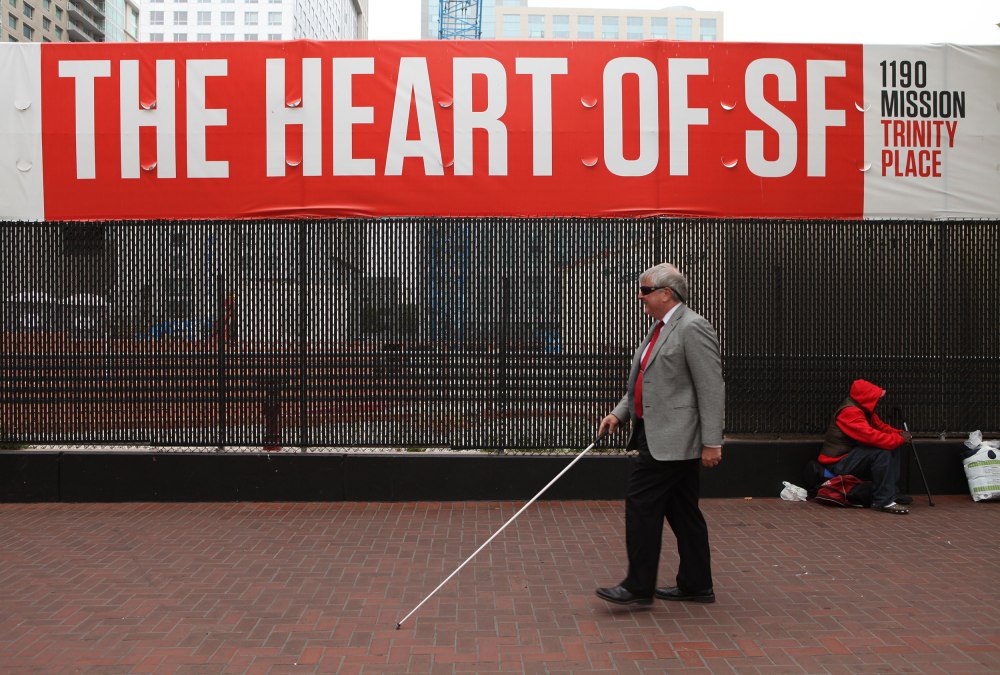
Bryan Bashin, Director of Lighthouse for the blind walks to the Lighthouse’s future office location on Market St. from their current building on Van Ness Ave. in San Francisco Calif. on Wednesday, June 25, 2013. Bashin has worked in San Francisco for about a decade and says that initially using his sight cane was a challenge because the homeless often sit or lay on the sidewalks.
The other week was an interesting one for me as a freelancer.
On June 24th I was detained while attempting to photograph arrests at Occupy Google (Mountain View) and on the 25th I decided to follow up that story and see if anything interesting would happen at the protest planned for Google I/O in downtown San Francisco. It was because I was already in San Francisco that I was able to pick up some freelance work after the protest.
After the protest I went to move my car and received a phone call from the Chronicle asking if I was immediately available to photograph two assignments in the city. I said I was and told the editor about my Google I/O protest photos, which they decided they also wanted.
I transmitted those sitting in the WIRED parking lot and immediately headed out to the first of the two new assignments. Halfway through the first assignment I received a text message saying the other one had been canceled (a no hitter pitched by Tim Lincecum had become the story of the day) and I breathed a sigh of relief.
I don’t mind shooting 3-4 assignments in a day and frequently have, but once in a while getting extra time on something makes all the difference in your images and I was really enjoying the assignment I was already on.
Getting that text message meant I could relax and photograph Lighthouse for the Blind’s Director Bryan Bashin until I felt done. “Done” is of course a relative term in the world of photojournalism but I spent the next few hours with Mr. Bashin when I originally would have had one.
The extra time meant I could talk to Bashin pretty freely which is how he ended up showing me this tactile graphic schematic of the Lighthouse’s future office (below). When he explained to me what a tactile graphic was I asked to see it because I realized the texture could make for a more interesting photo than you can usually get from a blueprint. This detail shot ended up being one of my favorites of the day.
The Lighthouse for the Blind is one of San Francisco’s oldest non-profits and has served the community for over 100 years. When I imagine all the changes in the city this non-profit has evolved with it blows me away.
The fact that they’ve just signed paperwork on a 40,000 sq foot office location in the “Twitter District” is huge news because of how many non-profits are struggling to keep their offices in the city.
I think they do great work for the blind community and I wish them god luck in the future.

Bryan Bashin, Director of Lighthouse for the blind demonstrates the use of a tactile graphics blueprint of the Lighthouse’s future office on Market St. from their current offices on Van Ness Ave. in San Francisco Calif. on Wednesday, June 25, 2013. Tactile graphics create literature, maps and schematics usable by both sighted and non-sighted people.
Graduation
Posted on June 4, 2014
My best friend recently graduated with his Master’s degree in Psychology from San Francisco State – the same college I graduated from a few years ago.
The day felt a lot more relaxed than I remembered it as an undergrad but there were still plenty of speeches glorifying the future, uncertainty of the future and the accomplishments of the robed masses.
Now that I’ve returned from Latin America I feel a lot like fresh graduate – I feel like anything could happen and I am both nervous and excited as I charge forward to greet it.
SF Jazz Gala 2014
Posted on May 22, 2014
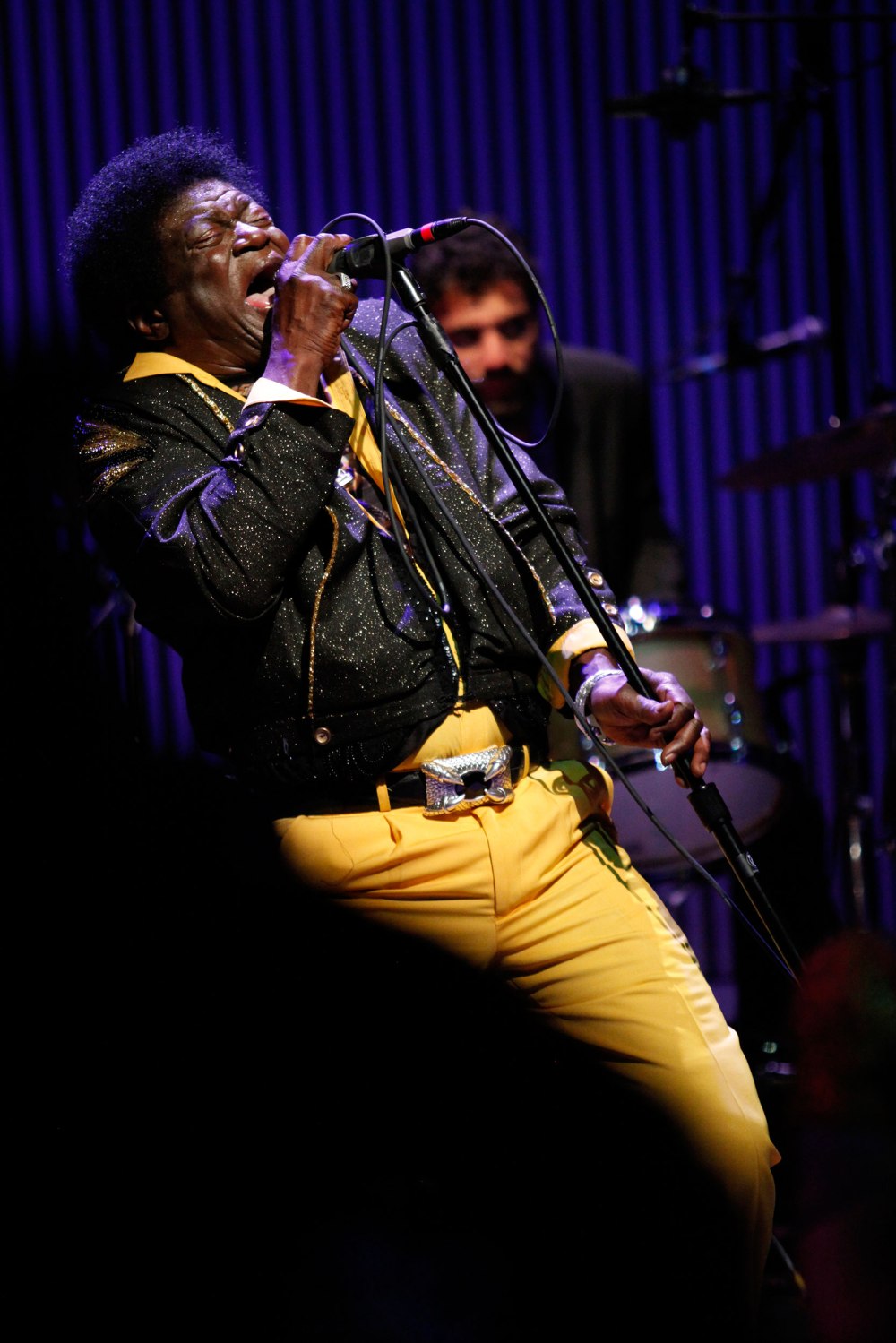
Charles Bradley performs during the SF Jazz Gala in San Francisco Calif. on Friday, May 16, 2014. Bradley, who once made a living impersonation James Brown, was recently discovered by Daptone and recorded his first album ‘No Time for Dreaming’ in 2011. (Photo Copyright The San Francisco Chronicle)
On Friday I covered the SF Jazz Gala for the San Francisco Chronicle and it was a fantastic event. I’ve covered over half a dozen galas for the Chronicle at this point and from a musical non photographer standpoint this one was my favorite although I was quite pleased with my images.
I wasn’t familiar with the name Booker T. Jones until I was standing 5 feet away from him and he and his band began playing green onions, which of course I have heard before. It’s one of the most famous non-lyrical songs in American History.
As I photographed him and the people enjoying his music I literally got the chills and paused for a moment to just appreciate that my job gives me moments like that.
Stunning.

Booker T. Jones covering “Sittin’ on the Dock of the Bay” at the SF Jazz Gala. (Photo Copyright The San Francisco Chronicle)
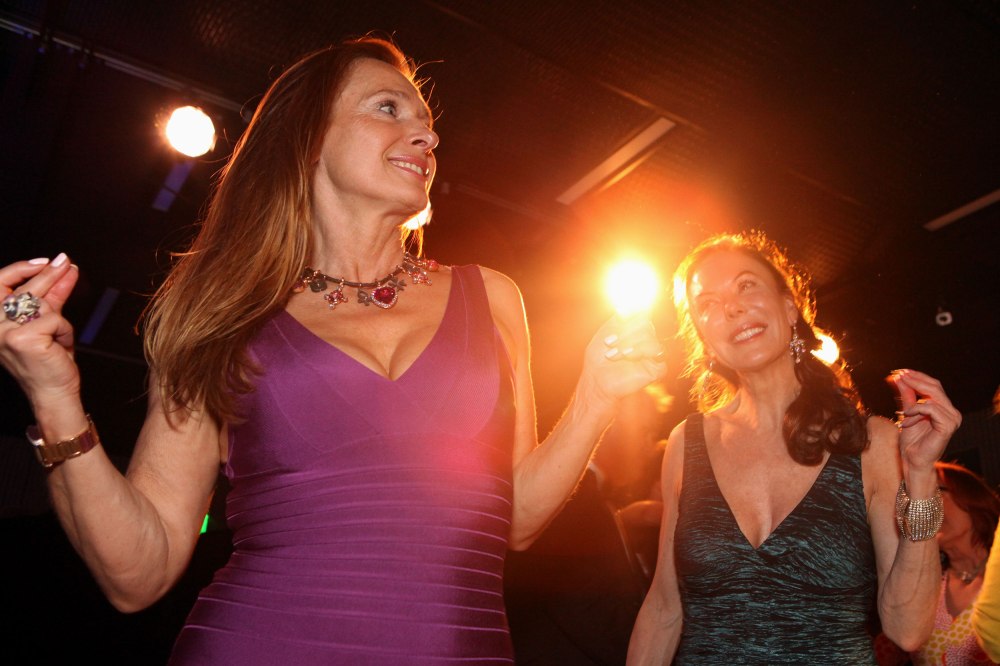
Elisabeth Thieriot and Margaret Mitchell dance front and center during Booker T. Jones’ intimate performance at the SF Jazz Gala in San Francisco Calif. on Friday, May 16, 2014. Jones is a four-time Grammy winner and a member of the Rock and Roll Hall of Fame. (Photo Copyright The San Francisco Chronicle)

Donna Huggins listens to Booker T. Jones as he plays ‘Green Onions’ during the SF Jazz Gala in San Francisco Calif. on Friday, May 16, 2014. Huggins is a huge fan of Booker T. Jones and was excited to see him perform in the intimate setting the event offered. (Photo Copyright The San Francisco Chronicle)

Miguel Zenon of the SF Jazz Collective plays with his 2-year-old daughter Elena during the SF Jazz Gala in San Francisco Calif. on Friday, May 16, 2014. Miguel Zenon was one of the many performers that entertained guests during the performance portion of the event. (Photo Copyright The San Francisco Chronicle)

Rex Cardinale (left) and his girlfriend Patricia Helleboid (right) share an online article with SF Jazz’s Major Gifts Officer Katiti Crawford (center) during the SF Jazz Gala in San Francisco Calif. on Friday, May 16, 2014. (Photo Copyright San Francisco Chronicle)

People dance during Charles Bradley’s performance at the SF Jazz Gala in San Francisco Calif. on Friday, May 16, 2014. (Photo Copyright The San Francisco Chronicle)
Dancing in the Desert
Posted on March 24, 2014
Salar de Uyuni (above) is one of the most amazing pieces of scenery I’ve ever witnessed. It is unreal. It is sky and salt and air.
Hundreds of tourists visit the world’s largest salt flat everyday but it is so massive that if things get a little too crowded you only need to turn slightly for a bigger cleaner view of the nothingness that you will spend most of the day speeding through in a land cruiser.
We stopped during our tour of the salt flat alongside all the other previously mentioned tourists near a grouping of rundown buildings for lunch – I served myself a small portion of food before inhaling and escaping my tour guide’s clutches for a few minutes before we were forced back into the crowded SUV.
It was in these precious few minutes that I saw this girl doing beautiful acrobatic stunts (dancing really) in slow motion for her boyfriend’s camera. I asked permission to take photos of her (she said yes) and this is what I came away with.
It’s a simple photo of a Brazilian girl dancing for her own memories but I love that I took this photo only for the sake of its aesthetic appeal. It’s not newsworthy, it doesn’t record an important event of any kind and I will most likely never seek to financially profit from it.
All of that doesn’t matter. I love this photo.
Escaping Cusco
Posted on March 2, 2014

Protestors carry a faux coffin adorned with Peruvian President Ollanta Humala’s name, photos and a dead rat in the Plaza De Armas of Cusco, Peru before setting it on fire on Tuesday, Feb. 25, 2014. Thousands of gathered from various regions of Peru to protest corruption within the Peruvian government and prevented traffic from flowing through the city. Photo: Alex Washburn
The day after Machu Picchu we leisurely packed our bags and had breakfast before asking the woman at the front desk of our hotel to please open the garage so we could be on our way. She said something to me that I didn’t quite understand, but I was so focused on hitting the road that I didn’t bother to clarify it.
As we rolled out of the garage onto a nearly empty street and on to Cusco’s Plaza de Armas it quickly became apparent that something was going on. There were no cars in the plaza and a few groups of police in riot gear stood in the shade at various locations.
I found this interesting as I slowly puttered behind Nathaniel, however things only got stranger as we moved our way through town. Avendia del Sol, like Plaza de Armas had no vehicles moving on it aside from a few other random motorcyclists and there were a lot of people walking freely in the street. As Nathaniel drove past a large group of men walking in the same direction we were heading one of them threw a rock at him, although I am certain by how casually it was thrown it was not meant to hurt him.
At the end of Avenida Del Sol we pulled into a gas station next to a huge roundabout where people were gathering en mass. The gas station attendants told us that we would have to wait till the protestors in the street moved on before they would serve us – it was at that moment a large white truck driving way too fast whipped around the circle and was met with a volley of rocks from the protestors. It was then we realized how serious things could be getting and I asked the gas station attendants what was going on.
They informed me that it was the first day of a two day protest that stretched throughout the region, though mainly focused in Cusco. People were protesting a variety of things including inflated government salaries, gas prices and false promises made by President Ollanta Humala.
It was because of these various grievances that people had called for a strike of all motorized transport – to prevent the use of gasoline.

Protestors march through Cusco, Peru on Tuesday, Feb. 25, 2014. Thousands of people gathered from various regions of Peru to protest corruption within the Peruvian government and prevented traffic from flowing through the city. Police presence was heavy although the protest remained largely peaceful. Photo: Alex Washburn
After a few minutes the gas station attendants motioned for Nathaniel and I to go to the pump furthest from the street so we could fill up. They told us that they didn’t think we would be able to leave the city and they seemed frightened by what was going on.
Wanting a second opinion we exited the station and approached a group of police officers to ask them what they thought. It was at this point that the photojournalist in me started having an all out fight with the Autopista End part of me – Photojournalist Alex loves photographing protests. I knew we really had to be getting out of Cusco, on the other hand the idea of skipping this protest was getting more and more painful by the moment.
The police officers, probably not wanting to alarm us tourists, told us we would have no problem getting out of the city, although it would be easier if we waited till the afternoon to do so. The idea of sitting around in our gear for hours and hours was really unappealing to us so we continued on our way down the main road out of town till we saw a wall of people blocking the way. We parked about 6 blocks away and watched as several other motorcyclists and cars approached the people and quickly turned around and gave up.
Nathaniel and I discussed our options and decided the best thing for us to do would be to go back to the hotel, stow away the bikes and hit the streets to document was going on. Latin American governments don’t have a great track record when it comes to human rights violations and protests so if anything illegal happened I would feel guilty not being present to document it.

A protestor carrying the city flag of Cusco participates in a demonstration in Plaza De Armas of Cusco, Peru on Tuesday, Feb. 25, 2014. Photo: Alex Washburn
In the time it took us to leave our hotel and then turn around to head back to it the protest had picked up steam. There was no confusion as to what was going on now that Avenida Del Sol was similarly blocked with a wall of people waiting to stop any motorists from heading into the city center.
We stopped a safe distance from the protestors puzzled about what to do. They certainly hadn’t blocked EVERY street that could lead us back to the hotel, however riding blindly on the steep cobblestone streets of Cusco was another unappealing option (remember what happened to Nathaniel’s ankle).
We hadn’t been stopped for a full minute before two men on a small motorcycle pulled up next to us. The guy on the back was filming with an old fashioned camcorder so I asked them if they were with the television news.
The driver of the motorcycle cheerfully answered that they were and I told him I was a photojournalist from the United States. He got an absolute kick out of that and asked where we were going. I told him we were trying to get back to our hotel and described to him where it was.
He thought a moment and said they were also trying to get back to Plaza De Armas and told us he would lead us back to our hotel. “Follow me!” – and he was off.
We wound around through some small neighborhoods around the city center full of kids enjoying the traffic free streets with spontaneous soccer and volleyball games and in about 10 minutes we were back to our hotel without having encountered another blockade.
I thanked the moto-journalists profusely and with a grin and wave they were off to continue their work. I was absolutely brimming with happiness being part of the journalism community at that moment- we have a strong sense of camaraderie that transcends borders.

Police monitor protestors as they march through Cusco, Peru on Tuesday, Feb. 25, 2014. Photo: Alex Washburn
The hotel staff smiled when I came back in the front door and I joked with them about what was going on outside. We were given the same hotel room we had spent nearly a week in and were soon walking towards Plaza De Armas (the focus of the protest) me carrying a 5D Mark II and Nathaniel with his Go-Pro and Canon G12.
I was right in my assumption that the protestors would ignore our presence as long as we were not violating the motor vehicle ban. Nathaniel and I both agreed that at no time did we feel like we were in danger. This video our motorcycles friends produced shows us riding through Cusco during the protest, check 38 seconds into the video: http://www.youtube.com/watch?v=RbwUKMoiTik
Photographing the protest was really fun for me because I haven’t had the opportunity to shoot an event like that in a long time and it is one of my favorite things to photograph. I love covering protests because the energy is high, you have to be alert at all times and people are usually so involved in what they are doing photographers can be truly invisible as they do their work.
Even the most laid back of subjects tend to be a little self aware in front of a camera, but that is hardly ever an issue during events like this.

Protestors burn a coffin adorned with Peruvian President Ollanta Humala’s name and photos in the Plaza De Armas of Cusco on Tuesday, Feb. 25, 2014. People gathered from various regions of Peru to protest corruption within the Peruvian government and prevented traffic from flowing through the city and greater Cusco region. Photo: Alex Washburn
I spent the next several hours photographing the protest and seeing if they AP was in need of any photos of the protest. Spoiler: They didn’t need the photos, however the Photo Director for the region told me he liked my work and to feel free to contact them again if I came upon anything else I felt was newsworthy.
With that bit of encouragement Nathaniel and I set off to get something to eat and re-prepare to leave Cusco the next morning. We ended up spending twice as much time as we wanted to in Cusco and even though we knew the blockades would still be up the following day we decided to roll the dice and make it happen.
I feel the need to paraphrase the day we actually left Cusco because this blog is getting really long and I don’t want to bore everyone to death who is still reading.
As we prepared to pass the first blockade out of the city some older gentleman told us to tell the protestors we were tourists and they would let us through. As Americans we are particularly nervous about volunteering that information (with all our gear on it’s hard to tell we are foreign), although the advice turned out to be invaluable for the next 8 hours.
The first blockade began hurling rocks and other things at me as I approached so I turned on my turn signal well in advance, stopped about 15 feet from them and motioned for someone to come up and talk to me. A man in a brightly colored sweater raised his arms in an effort to calm people as he walked up to me. He asked me one question – Are you tourists? When I said yes he started yelling at the crowd to let us through and that we were tourists. People kept shouting at us from all directions, but they stopped throwing things and let us through.

A woman ads her own opinions to a growing list of complaints during a protest against the Peruvian government in Plaza De Armas of Cusco Peru on Tuesday, Feb. 25, 2014. Photo: Alex Washburn
After some advice from the police just past the barricade we attempted to take the smaller streets to get out of the city. We spent nearly three hours backtracking, winding through neighborhoods and crossing pedestrian walkways in the most absurd places trying to get past all the barricades. I personally did not want to deal with having things thrown at me a dozen or so times and explaining over and over that we were extranjeros and in no way apart of the problem.
Then it began to rain… a blessing and a curse. My gloves and riding pants are not fully water proof so as I started to get colder and wetter people began to thin out and we ventured back to the main road out of town.
When we finally escaped Cusco the highway (beautifully paved by the way) was full of rocks, broken glass, piles of cacti, barbed wire, trees, burning tires, bits of cars and everything else people could get their hands on to slow or stop the flow of traffic.
There were at least 5 places the highway was totally blocked and I had to ask the people manning the blockades for permission to pass through. Although one group of people asked for money as we passed (we said no) everyone was perfectly willing to let us through when we identified as being non-Peruvians.
At one blockade they were having a meeting and I fell over as I tried to ride my motorcycle over the pile of trees they had laid across the road. As soon as I hit the ground 4 or 5 men from the group were helping me pick the bike up and lifted it over the barricade they had built.
After that – they helped Nathaniel to roll his bike safely over the trees and one of them gave me a good old fashioned “you be careful out there young lady” talking before we continued onward. By 4:30 we had only gone 80 miles and I was shaking with the cold. We stopped at a hotel for the night, giving up on the day, however with some really great stories about that one time we escaped Cusco in the middle of a protest…
The End.
Thinking at Machu Picchu
Posted on February 28, 2014
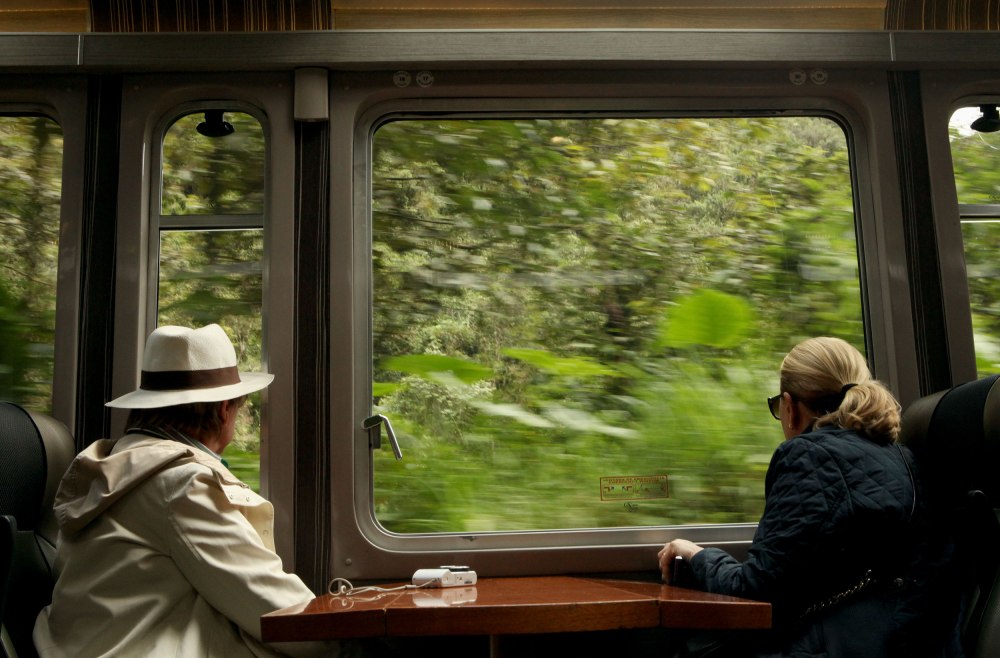
Taking the train to Machu Picchu was really fun. Unlike motorcycling through the scenery you can gawk at the mountains and the vegetation as much as you want. I fell in love with this two-some. The were probably from Spain judging by their accents. Photo: Alex Washburn
We visited Machu Picchu in a day trip from Cusco but the day after (trying to leave Cusco) was infinitely more interesting, which I will explain in my next blog.
Unless it’s an assignment for a client I have very little interest in photographing physical structures. I’d rather photograph people and events which I think always left my parents a little confused when they received updates from my travels in Europe.
That being said – Machu Picchu was gorgeous and it had some nice fog rolling through it along with rain which helped further thin out the low season tourist crowd.
I traveled a little bit with Nathaniel before we left on this 6+ month journey but he never had the same interest in documenting and producing content about it. He voiced the opinion that he felt so pressured to produce a video for Machu Picchu that collecting the b-roll and the sound possibly diminished his enjoyment of the experience.
I can see how that might be true – but I also think he is getting a lot of pride out of the responses his videos are receiving on this trip. It might in the end even help him understand better why I have the pride and enthusiasm I do for being a photojournalist.
Wanting to be and becoming a photojournalist has defined much of my life and I wouldn’t have it any other way.
One of the greatest parts of this trip is that although it is expensive (because of it’s duration) we are getting to see most of the places in South America that could take other people decades of ‘a week here and a week there’ type traveling to see. For the amount we are actually getting to see and experience it is actually really cost effective.
Although Machu Picchu its self wasn’t on my personal list of ‘places to see before I die’ list it was a really beautiful place that I appreciated the opportunity to enjoy.
And like so many times on this journey I had that realization soaking in the scenery that I rode my motorcycle from Oakley California to ___________.
To latitude zero. To a place with wild penguins. To South America. To Peru. To MACHU PICCHU.
I never seriously thought I would go to Machu Picchu.
Those moments of realization put the whole trip into perspective. It makes me appreciate our freedom and ability to even think of taking a trip like this.
People’s imaginations are often limited by their perceived reality. I could draw comparisons between my trip to the fact that in some parts of the world it is still illegal for women to drive but I can make an even closer comparison.
Most (all?) of my female family members in Mexico do not know how to drive. My great-grandmother was a true maverick starting her own business and becoming a home OWNER despite the fact she was totally illiterate.
But- none of my aunts or cousins drive. They live in totally patriarchal households which is great for some of them because a few of my uncles are hardworking loving and wise individuals. But, some of them live with worthless womanizing men that have made the latter part of their lives miserable.
When I really think about what this trip means…
I hope that in living my life on my own terms and making MYSELF happy I can embolden other women to make their own choices despite some of the cultural expectations that may be placed upon them.
The Niche
Posted on February 21, 2014
I’m still on the road heading forever south shooting pictures and writing blogs with my boyfriend for our Autopista End blog.
We’ve been on the road since October 8th 2013 and we have at least a month and a half left till we should theoretically be getting on a plane and flying back to San Francisco. In the meantime we still have a lot of ground to cover and the closer we get to Ushuaia – the greater my anxiety gets in relation to re-inserting myself into the photo community of the Bay Area.
The San Francisco Bay Area like Los Angeles and New York is one of those places people dream of growing up and running away to. Photographers come from all over the country to fight for a niche that will allow them to support themselves and live in one of the greatest places in the world. The place I grew up in is saturated with photographers, great and talented people I consider my friends.
After stepping away from the scene for 6 months I think it’s understandable that I have anxiety about fighting for my niche (again).
There are things I can and am doing to prepare for my return but I wanted to mention it in this post because it’s going to be an important phase of my life.
I’ve been getting a lot of people subscribing to this blog lately – I post daily to my AlexWashburn instagram account if you are interested in following my journey more closely.
Autopista End
Posted on February 11, 2014
This photo accurately depicts how I feel about motorcycle riding on the best of days.
After nearly 10,000 miles of dodging potholes, yelling at taxi drivers and countless hours wandering the avenidas, calles and autopistas of Latin America I have no less enthusiasm for the the motorcycle on most mornings. Sometimes though, after hours of vibrating on top of my excessively stiff corbin seat my thoughts are totally consumed by my physical discomfort.
Most days its great but some days the trip can be awful. Just like life.
I’m focused now on making pictures whenever possible and preparing myself to jump feet first back into the world of freelance photography when I get home.
If you are interested in seeing a wider selection of my photography and more specific details of my trip to Tierra Del Fuego on a motorcycle check out the blog: www.autopistaend.com
Thanks!
The Swing at the Edge of the World
Posted on January 29, 2014

The Swing at the Edge of the World is known locally in Banos Ecuador as La Casa Del Arbol. Photo: Alex Washburn
My boyfriend saw a post on Slate or some other website about The Swing at the Edge of the World in Baños Ecuador. As we headed south on our motorcycles he decided it was one of the main things he wanted to see in Ecuador and today we made that happen.
We took a $10 taxi ride from Baños to the (near) top of the mountain early in the morning to avoid the rest of the tourists and it was lovely. We met the little old man Carlos that takes care of the swing and monitors the volcano next to it for seismic activity and had the spot to ourselves for an hour in the fog before a group of young boys showed up.
Beautiful.

